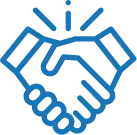Chinese Lessons with Native Chinese Tutors
You and your group can be trained by our native speaker qualified Chinese teachers and can meet at your place of work or home at a time convenient to you. These tailor-made Chinese lessons can take place any day of the week, including weekends, and can be scheduled for the morning, afternoon or evening. If your home or office is not suitable for you, you can attend the lessons at the teacher’s offices. You will be recommended a suitable course book to guide you through the lessons.

Reviews Of Our Chinese Courses

Valentina is a terrific teacher. I'm glad you placed me with her.

The lessons are going really well! My teacher is a great instructor. We have a hard time with schedules some weeks - most on my end - but we are making headway. Thank you!

















